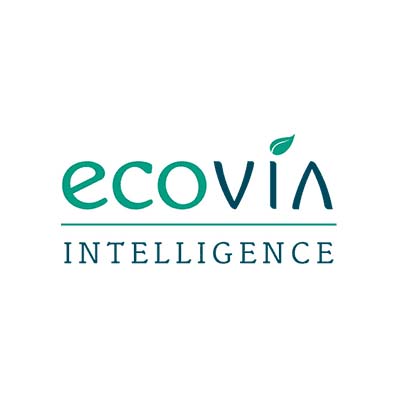There is growing debate about the future of environmental labelling in the food industry. The first debate concerns number of eco-labelling schemes; the EU plans to introduce legislation to curb the number of labels in the market place. The second debate concerns the disparity between environmental impact ratings of existing schemes. Ecovia Intelligence believes the way forward is consolidation of existing labels and harmonisation of impact measurement methods.
Over the last two decades, there has been a proliferation in the number of eco-labels in the food industry. Driven by ethical consumerism and sustainability initiatives of food operators, there are now over 300 eco-labels that represent some environmental/ sustainability attributes. Organic is the dominant and most widely adopted eco-label, with European sales of certified products approaching EUR 55 billion last year.

The European Commission plans to place limits on what new eco-labels will be allowed to be introduced. The EU Green Claims Directive aims to only allow eco-labels that are more ambitious than existing ones to come into the market. It also plans to curb eco-labels introduced by national and regional governments. In a recent investigation, the EU found that almost half of the verifications were either weak or not undertaken.
There are calls to limit the number of eco-labels because of consumer confusion. Various studies show that consumers cannot distinguish between labels of third party schemes and those that are self-designated. It is also becoming common to see multiple eco-labels on product packs.
Proponents of multiple eco-labels say they represent diversity; eco-labels now cover sustainable sourcing of single ingredients such as soya, palm oil, sugar cane, as well as wider agricultural practices (Global GAP and Red Tractor). Eco-labels also cover health (Nutri-Score), social aspects (fair trade), as well as other sustainability attributes like animal welfare (free-range), biodiversity, etc. Eco-labels also encourage food producers to continuously improve production methods, and enable the development of assessment tools.
The second major debate concerns environmental footprint ratings. A number of schemes are now measuring and communicating the environmental impact of food products. They include Éco-score, Planet-Score, Foundation Earth and the EU’s Product Environmental Footprint. The schemes involve giving ratings to food products according to their environmental impacts.
The disparity in methodologies used to calculate the environmental footprint is causing variations in product ratings. The EU Product Environmental Footprint (PEF) focuses on lifecycle stages of the product. It has been criticised by many NGOs as it does not distinguish between production methods. For instance, a potato will have the same environmental rating irrespective of whether it has been grown according to organic or conventional agriculture. Similarly, it does not make a distinction between meats and plant-based alternatives.
The Éco-score scheme of ADEME involves giving food products a score out of 100. Products have front-of-pack colour ratings, ranging from green (A) to red (E) to reflect their score; this is calculated by life cycle assessment, using data from an analysis of more than 2,500 product categories. The Éco-score scheme is backed by large retailers, including Colruyt and Lidl.
IFOAM Organics Europe is involved in a legal case against the developers and backers of the Éco-score scheme in France. They raise concerns about the use of the ‘Eco’ term for non-organic food products. There is also a wider issue about externalities; by focusing mainly on lifecycle analysis, the Éco-score methodology (among others) does not take into account factors like pesticide use, biodiversity impact, soil health, animal welfare, etc.

The Planet-Score scheme takes a more holistic approach, factoring in pesticides, biodiversity and climate impacts, into its product ratings. It has over rated over 700,000 products and is backed by leading European retailers.
The Foundation Earth scheme uses a new life-cycle assessment method that allows for the evaluation of 16 environmental impact indicators under PEF. It also enables a comparison between different food chains producing the same food types.
There are a number of other environmental impact rating schemes, such as ECO-SCORE (by Beelong) and Eaternity Score. Some countries are developing their own schemes; the French and Danish governments are expected to introduce environmental labelling schemes in 2024.
Ecovia Intelligence believes the way ahead will involve some level of harmonisation. A common framework for measuring impacts is required for rating schemes to be accepted by consumers. Schemes that can factor in externalities of food production, such as pesticide use, soil health, and wildlife protection, are likely to set the benchmark.
Consolidation is also expected. The number of eco-labels is expected to peak in the coming years, with some schemes expected to ‘swallow up’ smaller schemes. Successful labels are likely to be those like organic which are legally protected, as well as those that have industry backing (E.g. Roundtable on Sustainable Palm Oil).
The future of environmental labelling will be debated at the upcoming Sustainable Foods Summit, hosted in Amsterdam on 15-16th June 2023. More details are on the website
Posted: June 1st 2023
For permission to publish our research insights, please contact our media department

